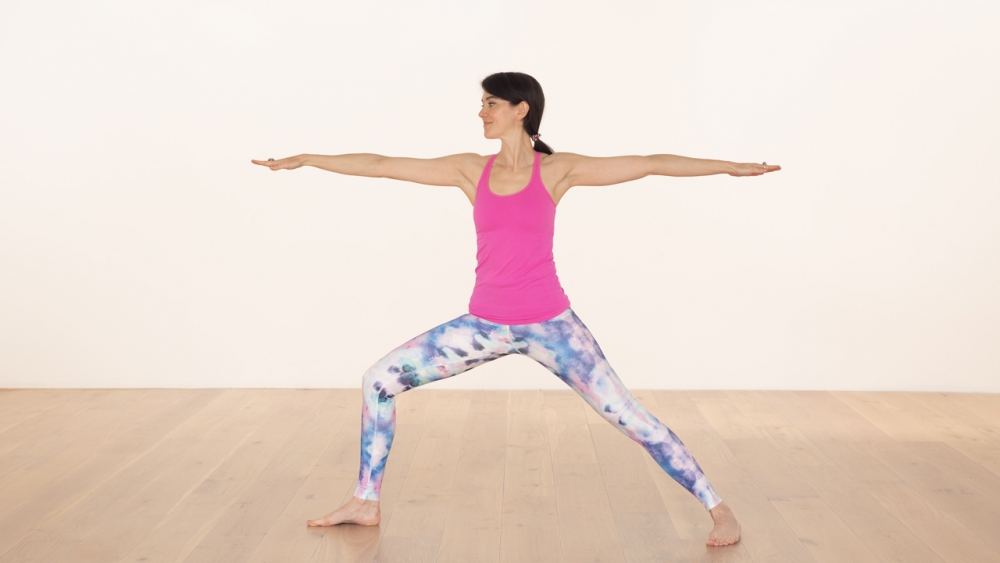Standing postures create awareness in the legs, open the hips and stretch the legs and hip muscles, so they’re great to practise regularly.
Virabhadrasana II or Warrior II pose is one such pose that can be practised at any level; from the basic to the experienced yogi. It is a powerful, energising standing pose that is most often used at the beginning of a class. As the name suggests, Warrior pose helps to cultivate our inner power and stamina. I like to practise it after I have opened the hips and woken up my legs with some lunges. When in this pose, I typically experience strength and lightness in my body.
I usually like to add Virabhadrasana II in a Vinyasa sequence with some other similar standing poses, like Parsvakonasana and Trikonasana and then do the pose again, staying in it for a bit longer, say 8-10 breaths on each side.
Lateral standing poses like Virabhadrasana II are good poses to lead you into a practice with balancing poses like Vrksasana (Tree pose), Utthita Hasta Padangustasana (Extended Hand to Big Toe pose) and Ardha Chandrasana (Half Moon pose) and/or leading to hip openers like Upavista Konasana (Seated Wide Angle pose) or Baddha Konasana (Bound Angle pose)
Modifications
Some people may find it challenging to keep the front knee in line with the front foot (the knee tends to “roll” in). If this is the case with you, try stepping your back foot wider away from the midline of your mat. This increases the space in the hips so healthier alignment can be maintained. If your adductor muscles are tight or the pose is too challenging with the front thigh horizontal, try it with the legs closer together. (Make sure your knee stays in line and is not ‘overshooting’ the front ankle.)
Benefits
With the leg muscles hugging in, the joints are stabilised and strengthened. Virabhadrasana II strengthens the feet and ankles, the inner thigh muscles are stretched and the hips are opened. With the body working, the breath deepens and lengthens and the experience of being alive is increased and body awareness deepens. While the muscles are engaged and drawing into the core of the body, the outer body can soften more, the shoulders can relax (while maintaining the arms in line with the shoulders!) and the hips can lower down and ‘open’ more. This will help create a balance between “Sthira” (steadiness) and “Sukha” (comfort) which is needed in any pose.
Click for step-by-step instructions on Warrior ll.

